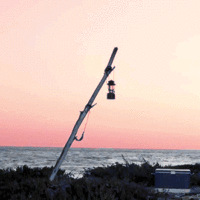More about National Museum of Western Art
Works at National Museum of Western Art

Sr. Contributor
The French government forced the Japanese to build the National Museum of Western Art.
The two countries probably have a much nicer way to put it, but that's the truth. France scooped up a trove of art in the wake of World War II belonging to Kojiro Matsukata, son of a Japanese prime minister and a very successful businessman. He got a law degree at Yale and then traveled through Europe on his way back to Japan, where he became the first president of Kawasaki. During World War I, Kawasaki was making a killing in London shipbuilding, so Matsukata made the city his home base throughout the war. He started buying art in London, amassing nearly 10,000 pieces that he intended to use to build a museum.
While he returned to Japan after WWI, Europe was a frequent business trip on his itinerary, with plenty of time set aside for him to go into full treat-yo-self mode around the best galleries on the continent. While many pieces in his collection made it back to Japan, most were stored around Europe. The Great Depression hit Japan hard, and forced Matsukata to sell off most of his artwork to get cash infusions to keep Kawasaki afloat. With the start of World War II, he consolidated his paintings in storage around Europe into a warehouse in London and the basement at the Rodin Museum in Paris (one of his good friends was running the joint and agreed to help out a brother art collector).
The London warehouse burnt to the ground, turning all the invaluable art inside to cinders. The art at the Rodin Museum survived Nazis, bombing raids, and the largest and most costly war in human history. But the French were super pissed at anyone associated with Japan or the Nazis, so once word about Matsukata's storage unit of fine art in Paris got back to the French government, they called finders-keepers, seizing every last frame as enemy property.
The Japanese government bartered, begged, and pleaded for the artwork to return. The French held on until the 1950s, when they offered the artwork to Japan (Matsukata was dead by the time), but only if it was all housed in a museum of French art. Japan readily agreed, going so far as having French/Swiss artist and architecture ace Le Corbusier design the damn thing. Today, yearly acquisitions have given the National Museum of Western Art a collection spanning the Renaissance through the 20th century. It's still the only national institution in Japan devoted to the showing and preservation of Western art, and Europe only had to twist Japan's arm a bit to get it.
Featured Content
Here is what Wikipedia says about National Museum of Western Art
The National Museum of Western Art (国立西洋美術館, Kokuritsu Seiyō Bijutsukan, lit. "National Western Art Museum", NMWA) is the premier public art gallery in Japan specializing in art from the Western tradition.
The museum is in the Ueno Park in Taitō, central Tokyo. It received 1,162,345 visitors in 2016.
Check out the full Wikipedia article about National Museum of Western Art













